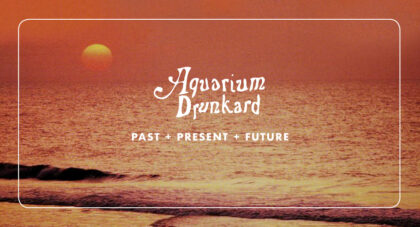Album artwork: Does it indeed affect our listening experience, and if so, how? Scratch the Surface, a recurring feature on Aquarium Drunkard, takes a look at particularly interesting and/or exceptional cover art choices.
____________________________________________________________________________________
"To get to Utica Quarry you take Interstate 65 north out of Louisville, over the Ohio River into Indiana...In the fall the trees are rich reds, golds, browns."
The above quote is found in author Scott Tennant's
Only the good shit. Aquarium Drunkard is powered by its patrons. Keep the servers humming and help us continue doing it by pledging your support. To continue reading, become a member or log in.


